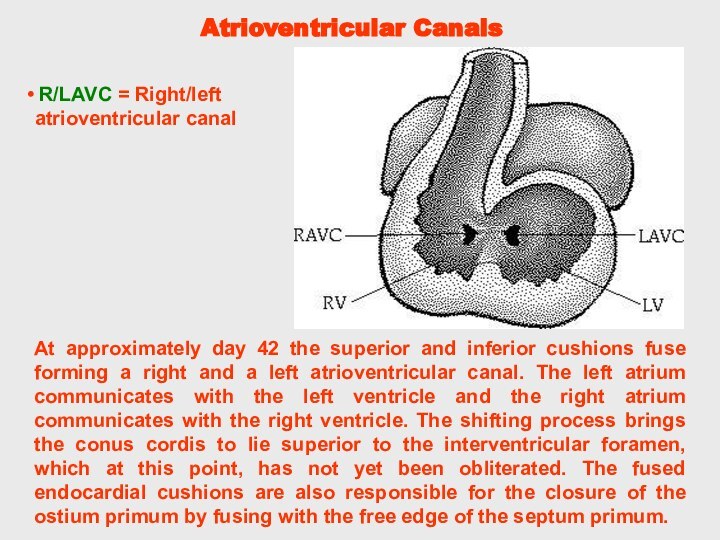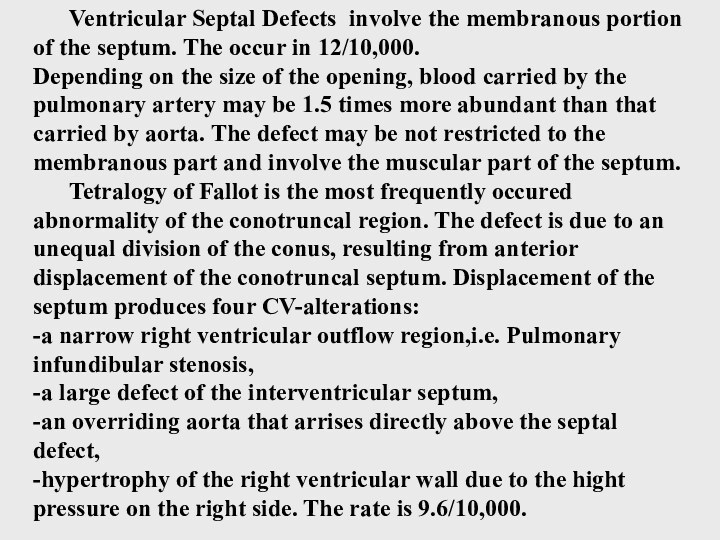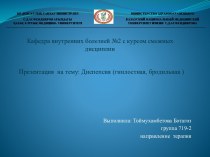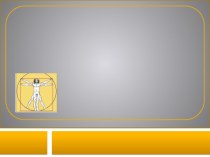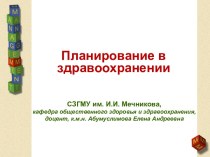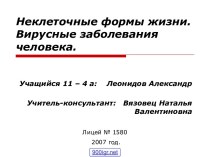the left sinus horn diminishes in size and forms
the coronary sinus and the oblique vein of the left ventricle.
SVC = Superior vena cava
IVC = Inferior vena cava
SA = Sinoatrial junction
CS/OV = Coronary sinus/ oblique
vein of left ventricle
LA, RA = Left, right atrium
LV, RV = Left, right ventricle
DEVELOPMENT
OF THE ATRIA
Gradually the sinoatrial oriface shifts to the right, due to the shunting of blood to the right, until the sinus venosus communicates with only the right atrium. The fate of each structure is as follows:
the right sinus horn becomes enlarged
the right anterior cardinal vein becomes the superior vena cava
the right vitelline vein becomes the inferior vena cava
the right umbilical vein is obliterated















































